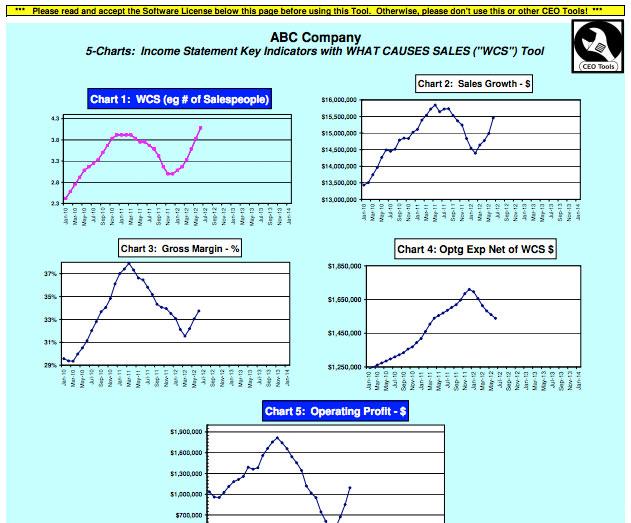Leadership Catalyst Blog

Leadership Lessons From a 4 Year Old
All Blog Posts, Coaching, Motivation / 05.03.2014
We all need a little inspiration sometimes, and my inspiration today came from the story of an amazing 4 year old in Minnesota who started an outreach that has raised almost $20,000.
To kick off my monthly Vistage Executive Peer Group meetings, I often start by having members mention a business and personal highlight for the month. This serves to reconnect everyone and helps members transition to a day of working “ON’ the business rather than working “IN” the business. Last week Jim Glomstad, General Manager of SporTech, mentioned that Valentines day was a pretty big deal for his family because of his daughter Carly.
When Carly was four, she read a book about a girl that loved Valentine’s day so much she spent days making Valentine cards and goody bags and delivered them to everyone in town via her little red wagon. Carly loved the idea of doing something that would make many people feel special, and she decided to imitate her storybook hero in real life.
Carly raised $450 in her first year which allowed her to distribute 125 goody bags to kids at a crisis nursery and seniors at assisted living residences – people who she thought might need to feel special. That was 6 years ago, and she has expanded her outreach every year. This year she raised nearly $5,000 and delivered 500 goodie bags and cards while also funding a kids connection scholarship and donating to the crisis nursery.
She has her own website, (carlyvalentine.com) and last year she was featured on Kare11. She has raised almost $20,000 over the last 6 years.
Here are some leadership lessons I think we can all learn from this 4 year old:
1. Communicate a compelling vision – Carly wasn’t content to deliver a few goodie bags on her own street. She wanted to cheer up kids who were sick and seniors who may not get any visitors.
2. Go all in. Carly was willing to invest her life savings ($48.76 from her piggy bank) to make her vision a reality.
3. Create a vision larger than yourself. Carly inspired her parents, her family, her kindergarten class, and her girl scout troop to join her in her mission.
4. Follow your passion. Carly truly loves making people feel special, which fuels her willingness to do whatever it takes to get the job done and grow her outreach every year.
5. Have great mentors and a strong support system. Carly couldn’t have done this without the support and coaching of her parents, Jim and Tina Glomstad.
Thank you to the Glomstad family for being great role models and an inspiration to us all!
Read More >>
3 Things You Need to Know About Vistage CEO Peer Groups
All Blog Posts, Vistage Peer Groups / 03.12.2013
Vistage CEO Peer Groups are a powerful resource for Minnesota business leaders.
As the leading Vistage Chair in the Twin Cities, I routinely facilitate peer groups for some of the top executives in Minnesota. Over the last year, my peer groups have been noted in a variety of publications such as The Minneapolis Star Tribune, The Minneapolis/St. Paul Business Journal, and Entrepreneur Magazine.
Despite increasing amounts of media coverage, many business leaders are still unaware of the benefits that CEO peer groups have to offer. The most frequently asked questions I encounter are:
- What is a CEO or executive peer group?
- Why do people join CEO peer groups?
- What topics do CEO peer groups cover?
The following post provides answers to those questions and guidance on finding the right peer group for you.
1) What is a CEO peer group?
A CEO peer group is a cohort of executives and owners of non-competing businesses who meet regularly to help each other grow their organizations, their people, and themselves.
These peer groups are intended to be a confidential “safe haven” where business leaders can work through their toughest strategy, leadership, and people challenges together.
Most importantly, CEO peer groups consist of experienced executives who share the frank feedback that is often so hard to obtain within one’s organization.
2) Why do people join CEO peer groups?
The members of my CEO peer groups join for a variety of reasons, both personal and professional.
Most entrepreneurs join CEO peer groups because they want to increase their effectiveness as leaders or enrich their lives – for entrepreneurs these aims are often intertwined.
For CEOs or heads of companies, many join CEO peer groups because they want to run their businesses instead of having their businesses run them. These individuals find that meeting monthly with a group of experienced, non-judgmental peers helps stop them from working “in the business” so they can focus on working “on the business” by being more strategic.
3) What topics are covered in CEO peer groups?
Vistage CEO peer groups tackle the most difficult challenges that executives face.
The topics covered in my CEO peer groups include business strategy shifts, assessing talent, and work-life balance. Often CEOs find that posing a challenge to a peer groups helps them clarify the real issue and frame their problem more accurately.
Here are some examples of issues we processed recently:
Merger Matchmaking
The CEO of $70M company was behind his revenue plan and wanted help analyzing a potential merger opportunity with a much smaller firm before taking it to his board of directors.
The group asked him a number of tough questions about the strategic fit of the target company to assure he had covered his bases before taking it to the board.
Strategic Focus
A $2M family firm felt that their sales had plateaued, and the CEO was trying to decide whether he had the right people in the sales role. Further probing by the group revealed that his sales people had been highly successful in the past, and that there were plenty of opportunities in the pipeline.
The group discussion led to the insight that sales people were spending a lot of time on opportunities that were outside of the company’s sweet spot. The group helped him better define his target customer so he could focus his sales effort there, rather than chasing opportunities that were outside of their core.
Finally, they suggested that he and his sales people go on a few joint calls to make sure they were executing good sales fundamentals, and had not developed bad habits.
Trust Issues
A relatively new CEO who had been brought in from the outside felt a need to either get an executive coach for a key member on her leadership team, who she didn’t trust. The group asked her a number of questions to help her diagnose whether the trust issues she was experiencing were a function of the person’s “character” or “capability.”
They shared their experiences with executive coaching, and suggested that while it can be highly effective in closing capability gaps, it doesn’t work when the trust issues are due to character or integrity gaps. Based on their input, she decided that she and the organization would be better off if she replaced the key executive.
Joining Executive Peer Groups
Overcome your business challenges by joining a Vistage CEO peer group.
Peer advisory groups are an important staple of the Vistage experience. My peer groups are a place for Twin Cities executives can hash out their most difficult business problems in a confidential setting.
Vistage groups have leaders from small to large companies across a range of industries, including manufacturing, finance and technology. Although Vistage members are typically accepted by referral, interested individuals can familiarize themselves with my Vistage groups to determine whether they are a good fit.
Read More >>
Predicting & Overcoming Business Growth Barriers
All Blog Posts, Business, Change, Vistage Peer Groups / 18.11.2013
I recently met with a successful entrepreneur who had grown his company to over $4.5M in revenues in just a few short years. He knew he needed a CEO Peer Advisory Board to help him take his company to the next level, but didn’t see how he could squeeze in a monthly peer group meeting in his already packed agenda.
He found himself starting work at 3:00 am to work on client projects, meeting with up to 10 customers a day, and then doing more project work in the evenings.
Like many business owners of companies with less than $5M in revenues, he was so busy selling, serving customers, and putting out fires, he felt he needed to clone himself before joining a group.
It is often said, “What got you here, won’t get you there,” and nowhere is this truism more evident than when trying to profitably grow your company.
Most entrepreneurs struggle with very predictable barriers as they grow their companies from $1M in revenues to $10M and beyond.
Read More >>
Business failure isn’t a sudden event.
Minnesota business leaders need to focus on accurate performance indicators to ensure long-term success.
Florida: December 29th, 1972
Eastern Airlines Flight 401 was a routine flight traveling from JFK Airport to Miami. As the pilots engaged the landing gear they noticed that one of the plane’s three indicator lights failed to turn on.
Not knowing whether the light was burned out or whether the landing gear had failed to lock in place, the two pilots and flight engineer focused on solving the problem.
They tried unsuccessfully to reengage the landing gear and then sent the flight engineer down below to see if he could do a visual check from a small window in the plane’s nose.
The three were so focused on fixing the problem that they failed to notice that one of them had nudged the plane’s control column with his knee, which disengaged the autopilot and sent the plane into an “imperceptible descent.”
The pilots had taken their eye off the plane’s dashboard, which had several indicators to show they were losing altitude and were in peril.
At 11:42 p.m. Flight 401 slammed into the everglades at 244 mph, killing 101 people.
How Minnesota business executives can avoid imperceptible descent
The crash of Flight 401 is not simply a tale of a blundering flight crew. The majority of business crises arise due to a similar misplacement of focus at the executive level that causes a company to slip into a disastrous imperceptible descent.
Business speaker Mike Richardson (Author of Wheelspin) recently led a discussion on imperceptible descent at my Vistage CEO Peer Advisory Group meetings, and impressed upon us the importance of keeping our eyes on the horizon and key business indicators.
In our next meeting, Vistage speaker Kraig Kramers made a compelling case that the monthly and year-to-date financial reports that most companies rely on do not give an accurate picture of what is truly happening in a business.
Financial reports typically do not control for varying month lengths and how weekends or holidays fall in a given year. This means that there could be 20% more business days from one February to the next, making for an inaccurate comparison.
The solution is to replace the typical monthly financial spreadsheets with trailing twelve month charts which plot the moving 12 month totals or averages for your key indicators.
These eliminate the “noise” caused by random monthly variation and give you a true picture of what is happening in your business (up is good, down is bad).
What business performance measures are important?
Key performance measures for a business will vary by industry. Kraig Kramers recommends starting with five fundamental measures that apply to all businesses:
- What causes sales (WCS)
- Sales growth
- Gross margin
- Operating expense net of WCS
- Operating profit
Chart these measures on a single page to get a true picture of whether your business is experiencing an imperceptible decline.
The task may appear daunting initially, but the good news is that business leaders do not have to reinvent the wheel – a spreadsheet version of this chart is available online.
The spreadsheet that Kraig provides also includes several tips to ensure that you get the most value out of it.
The members of my Vistage Peer Advisory Group have found these performance measures helpful in recalibrating how they evaluate the performance of their companies.
Brian L. Davis is the leading Vistage Chair in the Twin Cities. Learn more about his Vistage member companies here.
Read More >>Be a Leader: “Take the Blame”
All Blog Posts, Change / 26.04.2013
 From childhood, most of us try to avoid responsibility for negative outcomes because of the fear of punishment that might accompany it. This thoughtful article suggests that “Contrary to what you may feel in the moment, taking the blame is the power move, strengthening your position, not weakening it.”
From childhood, most of us try to avoid responsibility for negative outcomes because of the fear of punishment that might accompany it. This thoughtful article suggests that “Contrary to what you may feel in the moment, taking the blame is the power move, strengthening your position, not weakening it.”
Rather than making you vulnerable, taking the blame for something that you are reasonably associated with makes you appear trustworthy and responsible, and changes the mood in the room from pointing fingers to one of constructive problem solving. As a senior leader, taking the blame for things you are remotely connected to in a meeting reinforces a culture of accountability and “no excuses”.
Take a few moments and explore “Why You Should Take the Blame” …..and share it with your team as a tool for tearing down silos between departments.
Read More >>When does telecommuting work well, and how can we make it more effective?
All Blog Posts, Motivation, Vistage Peer Groups / 13.03.20133 comments
 The newest occupant of the corner office at Yahoo made a tough and surprising call a couple of weeks ago when she put an end to telecommuting. Despite being new to the company and expecting her first child, Marissa Mayer has evidently taken a hard look at how things work at beleaguered Yahoo and decided the work at home option that so many of her employees had chosen may be more of a problem than a solution. Learn why columnist Anne-Marie Slaughter in her recent article in the Atlantic thinks that Marissa Mayer’s Job is to be CEO, Not Make Life Easier for Working Moms.” This article, unsurprisingly, prompted not a little controversy. (Check out the numerous comments at the end of the article for an interesting discussion.)
The newest occupant of the corner office at Yahoo made a tough and surprising call a couple of weeks ago when she put an end to telecommuting. Despite being new to the company and expecting her first child, Marissa Mayer has evidently taken a hard look at how things work at beleaguered Yahoo and decided the work at home option that so many of her employees had chosen may be more of a problem than a solution. Learn why columnist Anne-Marie Slaughter in her recent article in the Atlantic thinks that Marissa Mayer’s Job is to be CEO, Not Make Life Easier for Working Moms.” This article, unsurprisingly, prompted not a little controversy. (Check out the numerous comments at the end of the article for an interesting discussion.)
 Within a couple of days of the Yahoo announcement, Best Buy’s new CEO, Hubert Joly, made the same call by putting an end to the practice of ROWE (Results Only Work Environment) that Best Buy had popularized, and which allowed employees to work at home as long as they were achieving their objectives. The new Best Buy policy does allow for some telecommuting exceptions at management’s discretion.
Within a couple of days of the Yahoo announcement, Best Buy’s new CEO, Hubert Joly, made the same call by putting an end to the practice of ROWE (Results Only Work Environment) that Best Buy had popularized, and which allowed employees to work at home as long as they were achieving their objectives. The new Best Buy policy does allow for some telecommuting exceptions at management’s discretion.
During my one-to-one coaching sessions with my Vistage CEO Peer Group members, I have found a wide range of opinions on this. Some say this totally validates their distrust of work at home policies. Others recognize that they have scores of geographically distributed people productively working out of their homes, and that centrally locating these people is not feasible or desirable. In either case, telecommuting is probably not going away entirely, and we need to better understand in what situations it works and how we can make it more effective.
That is where you come in. So kind readers, please reply to this post with your comments.
 In your experience when has telecommuting worked well? When has it failed? What are some best practices you have put in place to make it better?
In your experience when has telecommuting worked well? When has it failed? What are some best practices you have put in place to make it better?
I am looking for your brief observations and quick stories of a paragraph or less in length. In a couple of weeks I’ll summarize your answers and add some insights of my own on how to get the most out of telecommuting. Thank you for participating!
Read More >>
